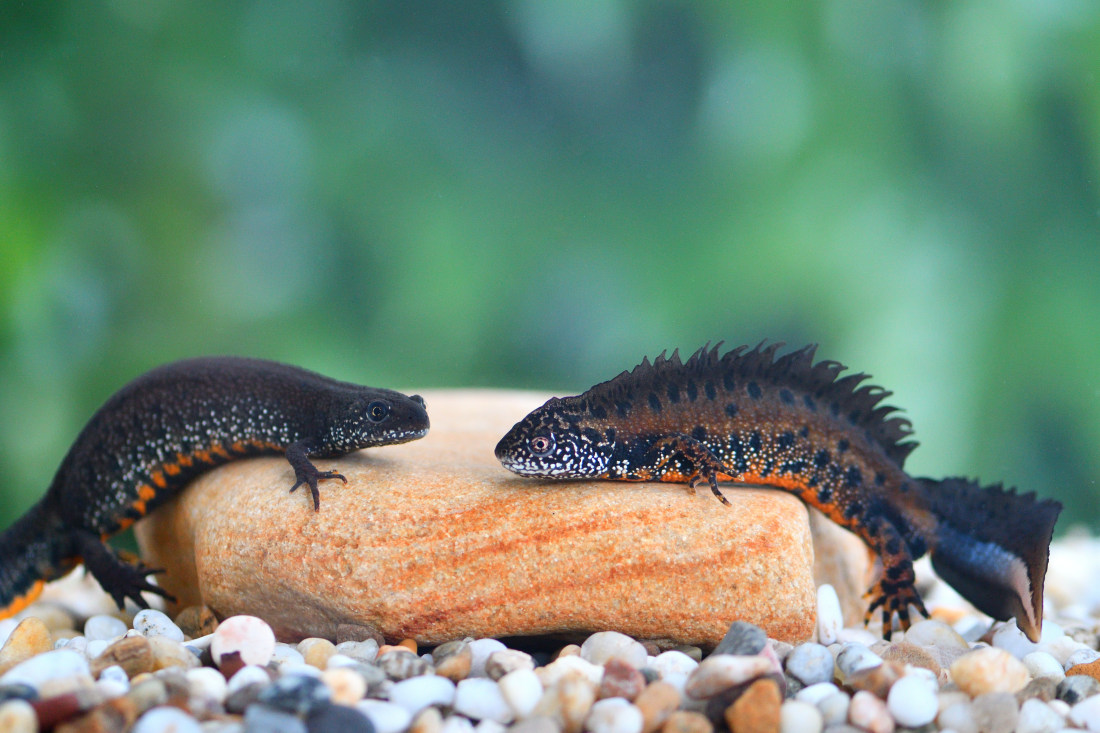CARE GUIDE
Triturus dobrogicus
The Danube crested newt or Danube newt is a species of newt found in central and eastern Europe, along the basin of the Danube river and some of its tributaries and in the Dnieper delta. It has a smaller and more slender body than the other crested newts in genus Triturus but like these, males develop a conspicuous jagged seam on back and tail during breeding season.
NATURAL RANGE
Serbia, Bulgaria and Romania to the south of the Danube Delta and the extreme southeast of Ukraine and Moldova
HOUSING
Crested newts are hardy, robust newts that are very easy to maintain in captivity. They are tolerant of many different environments, and relatively easy to breed and rear. It is possible to maintain crested newts according to their natural cycle of aquatic and terrestrial life, or to maintain them aquatically all year round. An aquatic or terrestrial setup should be no smaller than 45x30x30 cm (18x12x12 inches) for two pairs. It is possible to create a semi-aquatic setup, which will accommodate both aquatic and terrestrial habitats. This would need to be correspondingly larger, in order to provide enough of each habitat. Depending on the space and resources available to the keeper, it may be easier to have a separate setup for each mode of life.
TEMPERATURE
Temperatures should be less than 25ºC (75ºF) – higher temperatures may induce the newts to attempt to leave the water. Crested newts will remain fully active down to around 10ºC (50ºF). Artificial lighting is not necessary for the benefit of the newts, as they are mainly nocturnal in the wild. However, it may help with breeding, and may be necessary for plant growth.
SIZE & LIFESPAN
Up to 18cm long
Up to 10 year lifespan
FEEDING
SOCIAL BEHAVIOR
SEXING
Distinguishing the sexes is relatively easy at all times- males have large cloacae, and are relatively slim. Females are much stockier, and may appear pear-shaped. When the animals are in breeding condition, it is unequivocal- males have high toothed crests, and a white flash along the sides of the tail.


